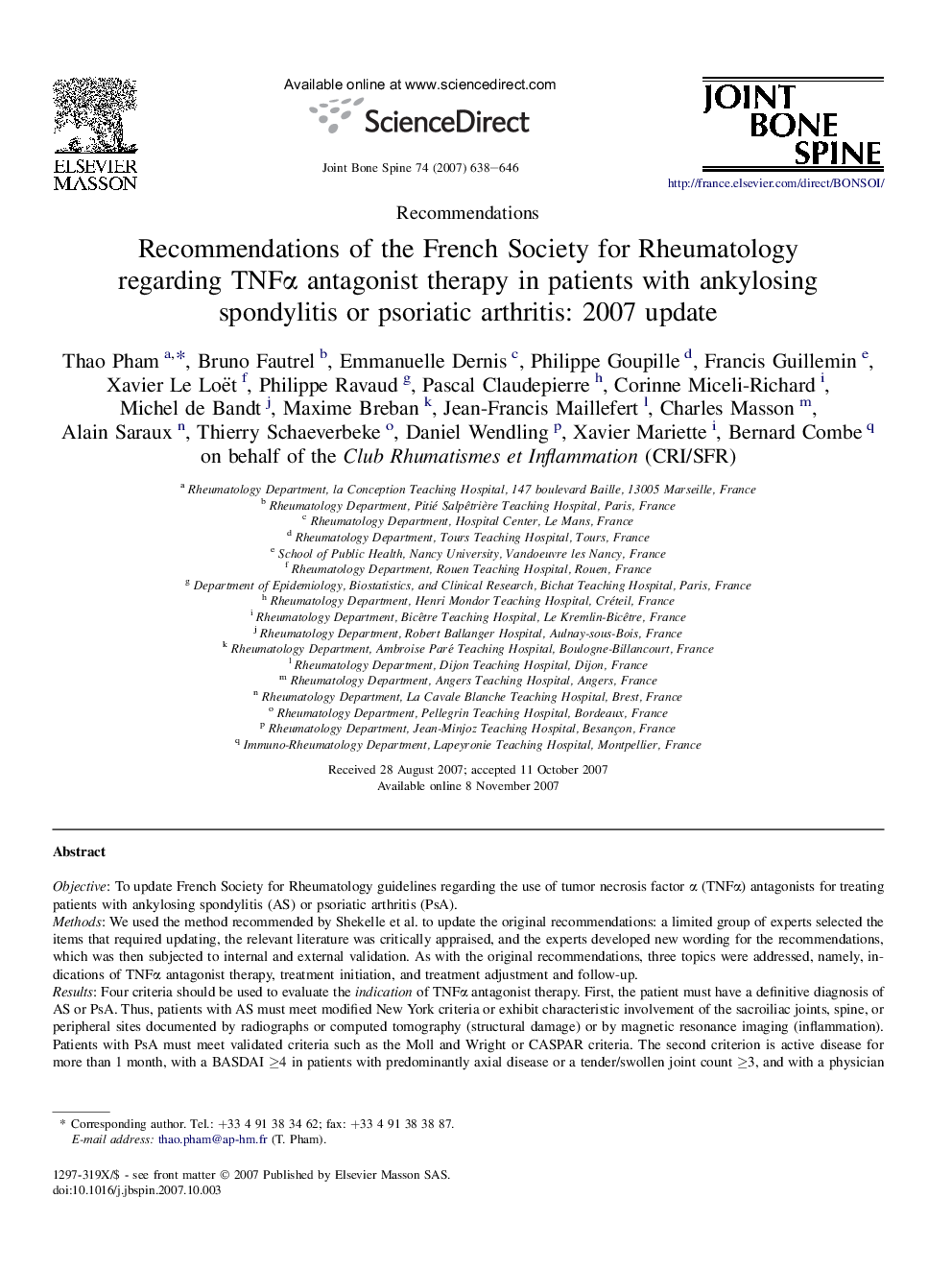| کد مقاله | کد نشریه | سال انتشار | مقاله انگلیسی | نسخه تمام متن |
|---|---|---|---|---|
| 3367102 | 1218427 | 2007 | 9 صفحه PDF | دانلود رایگان |

ObjectiveTo update French Society for Rheumatology guidelines regarding the use of tumor necrosis factor α (TNFα) antagonists for treating patients with ankylosing spondylitis (AS) or psoriatic arthritis (PsA).MethodsWe used the method recommended by Shekelle et al. to update the original recommendations: a limited group of experts selected the items that required updating, the relevant literature was critically appraised, and the experts developed new wording for the recommendations, which was then subjected to internal and external validation. As with the original recommendations, three topics were addressed, namely, indications of TNFα antagonist therapy, treatment initiation, and treatment adjustment and follow-up.ResultsFour criteria should be used to evaluate the indication of TNFα antagonist therapy. First, the patient must have a definitive diagnosis of AS or PsA. Thus, patients with AS must meet modified New York criteria or exhibit characteristic involvement of the sacroiliac joints, spine, or peripheral sites documented by radiographs or computed tomography (structural damage) or by magnetic resonance imaging (inflammation). Patients with PsA must meet validated criteria such as the Moll and Wright or CASPAR criteria. The second criterion is active disease for more than 1 month, with a BASDAI ≥4 in patients with predominantly axial disease or a tender/swollen joint count ≥3, and with a physician assessment of disease activity of ≥4/10. The third criterion is failure of at least three non-steroidal anti-inflammatory drugs in patients with axial disease or of disease-modifying antirheumatic drug (DMARD) therapy (methotrexate, salazopyrine, or leflunomide) in patients with peripheral disease. Fourth, the patient must be free of contraindications to TNFα antagonist therapy. Four recommendations pertain to the initiation of TNFα antagonist therapy: a workup should be performed prior to treatment initiation; there is no evidence that one TNFα antagonist is more effective than the others, so decisions about drug selection should be shared with the patient and guided by available safety data and the patient's profile; there is no proof that greater effectiveness can be achieved by routinely combining a conventional DMARD; and patients should receive regular standardized follow-up. The last four recommendations deal with adjusting TNFα antagonist therapy: the treatment objective is a 2-point or greater improvement in the BASDAI in patients with axial disease and a 30% or greater improvement in the tender/swollen joint counts in patients with peripheral disease; there is no evidence to support the introduction of DMARD therapy in non-responders, who can be switched to another TNFα antagonist or, when on infliximab, given higher dosages or more closely spaced injections; patients who fail to tolerate one TNFα antagonist can be switched to another TNFα antagonist if allowed by the nature of the adverse event; and when a remission is achieved, reduction or discontinuation of concomitant anti-inflammatory therapy should be considered, followed in the event of a prolonged remission by a reduction in the dosage of the TNFα antagonist.
Journal: Joint Bone Spine - Volume 74, Issue 6, December 2007, Pages 638–646